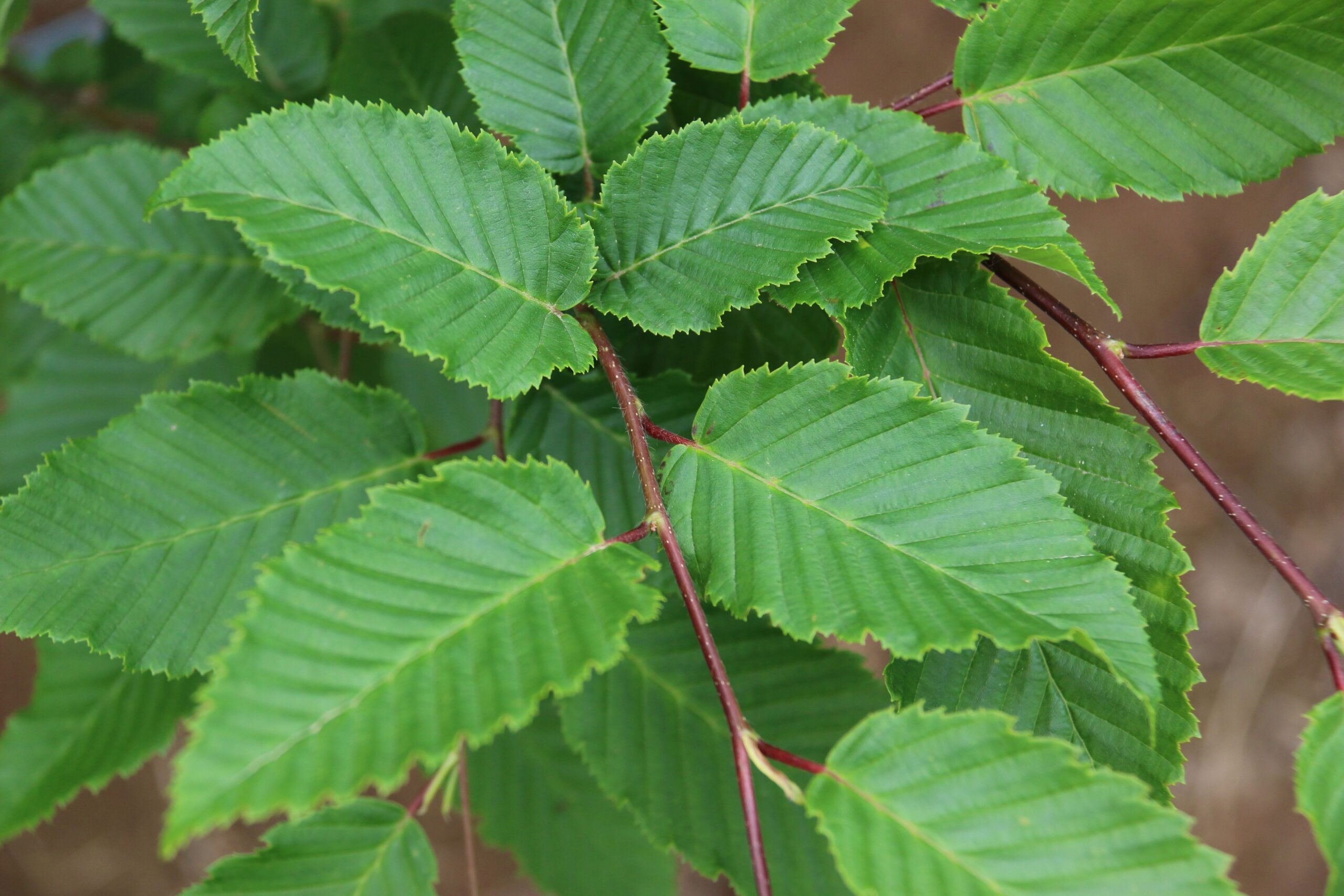Hornbeams (Carpinus) may be lesser-known trees, but their toughness and versatility makes them suitable in a variety of landscapes, including as street trees or for screening. It’s no surprise that they’re becoming more popular.
Tiffanie Baker, manager of sales and production at wholesale grower Bountiful Farms Nursery Inc. in Woodburn, Oregon, has been growing shade trees for 23 years, including three European hornbeams: Carpinus betulus ‘Fastigiata’, C. b. ‘Frans Fontaine’ and C. b. ‘Lucas’. Those are the three most popular grafted hornbeams grown at the nursery, and most are grown pot-in-pot, she said.
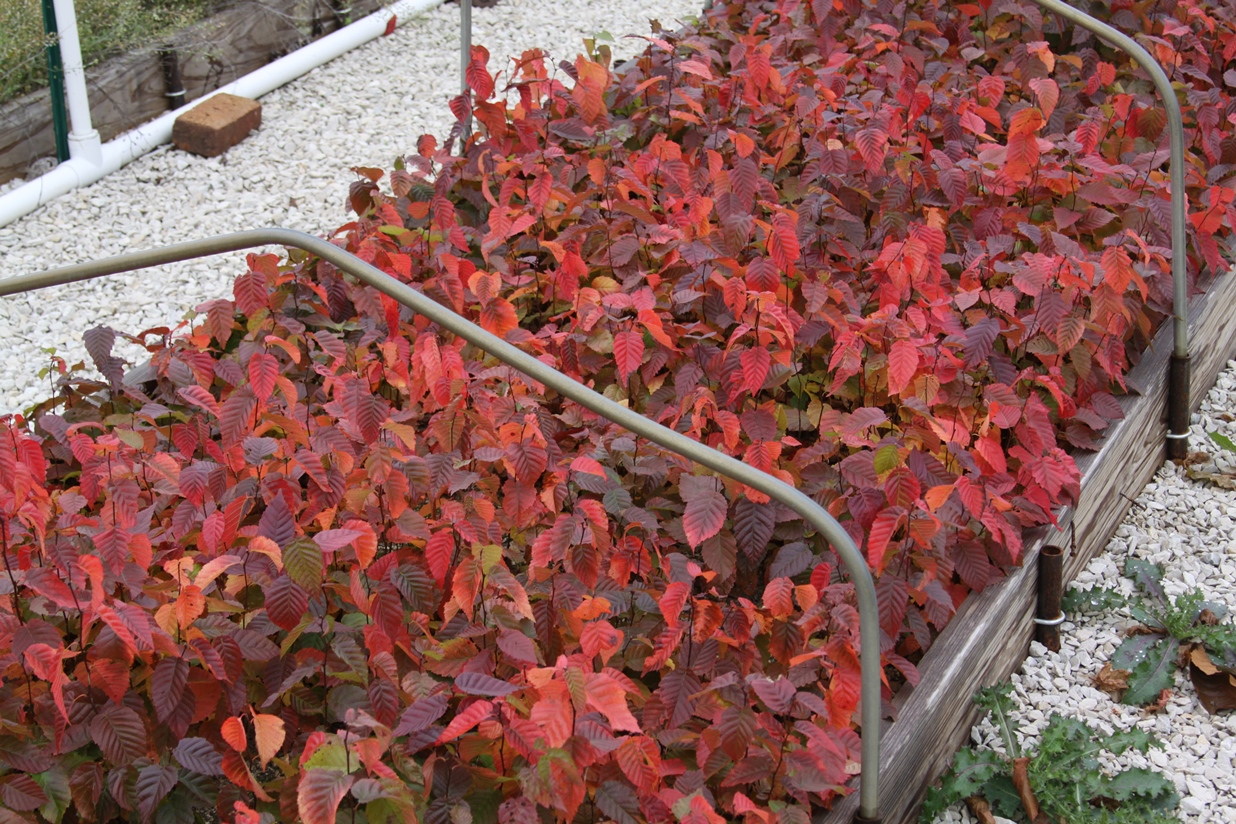
Growing popularity
Rick Metzger is the sales and production manager at wholesale grower Heritage Seedlings & Liners Inc.in Salem, Oregon, which grows nine grafted types plus the European hornbeam (C. betulus), American hornbeam (C. carolinianas) and the Korean hornbeam (C. coreanas).
Hornbeams are becoming more popular than they were, Metzger said. “Some are used for hedges and some as straight street trees, just depending on where they’re planted,” he said.
“They’re very resilient, they can take pollution and they’re a good city tree,” said Guy Meacham, new plant development manager at J. Frank Schmidt & Son Co. in Boring, Oregon. “They don’t suffer from too many disease problems.”
He said ‘Fastigiata’ is the most commonly used cultivar. Then the slightly narrower ‘Frans Fontaine’ was introduced in the 1990s, and Meacham said for the longest time those were the two most popular hornbeams. In the last 20 years, Meacham said, the American hornbeam, has become more prevalent.
He added that some varieties of the American hornbeam do not shape well, but growers have started developing other varieties that work better in streetscapes and landscaping.
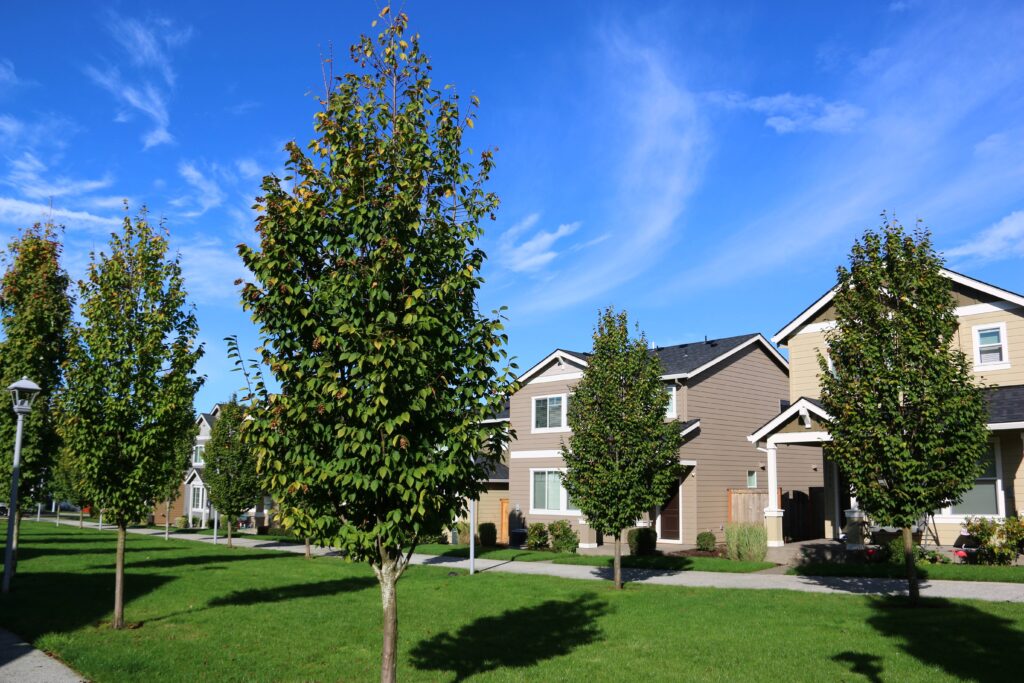
Streetscape trees
Lyle Feilmeier, an arborist with 29 years at arbor services firm Bartlett Tree Experts in Clackamas with 35 years’ experience in the industry, said he has learned the value of hornbeams and their specific uses.
“A hornbeam has a lot of value in its younger years as a street tree, as a screening tree,” Feilmeier said. The foliage comes in with a wall of green leaves that block the light. “As the tree grows, depending on the cultivar, it can become a large monster that overpowers a site.”
In its first eight to 10 years, the ‘Fastigiata’ grows very narrow in a columnar form, but once it reaches about 30 to 40 feet high, it stops growing tall and instead grows very wide — about 25 to 30 feet wide.
Feilmeier said knowing about that fact when selecting the trees helps a homeowner in the long run.
“Many people plant these trees and only think about the short term,” Feilmeier said. “The first five years they’re amazing trees, but Mother Nature doesn’t stop. In neighborhoods or large developments, they’re often used as street trees, and are appealing for eight to 10 years. Then they keep growing and they lose visibility, and it depends on that private tree owner and what they’re trying to do.”
Baker at Bountiful Farms said it’s important for landscapers and homeowners to know this so they can plan for it in the long term. “They’ll plant it and let it go and it will usually end up getting pruned,” Baker said.
Baker said ‘Fastigiata’ can be used for residential purposes too.
“Residents use them if they have big properties to line driveways,” Baker said. “Or in small properties if they get fooled to think it’s a columnar tree, and then they have to take it out after eight years.” The ‘Fastigiata’ is the fastest growing Carpinus that Bountiful Farms grows.
‘Frans Fontaine’ is better suited as a narrower street tree. Baker said at a young age it looks exactly like the ‘Fastigiata’, but doesn’t grow as wide. At full growth, the ‘Frans Fontaine’ is about 35 feet tall and 15 feet wide.
“It’s very low maintenance and should be a street tree because it does maintain its upright form.” She said once established, both the ‘Fastigiata’ and the ‘Frans Fontaine’ can have a very long life.
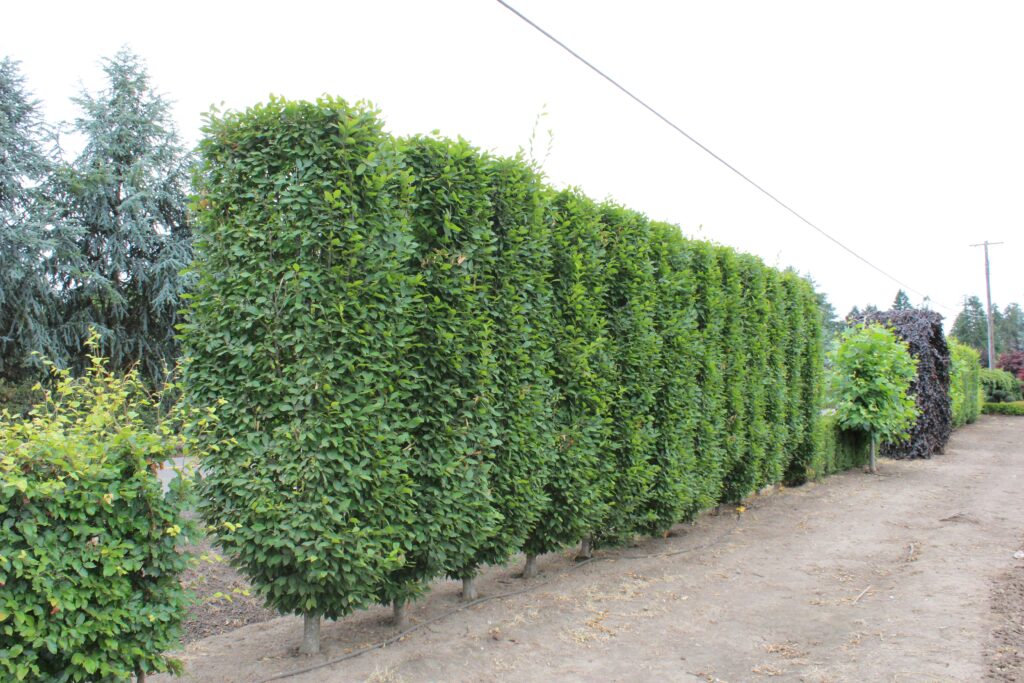
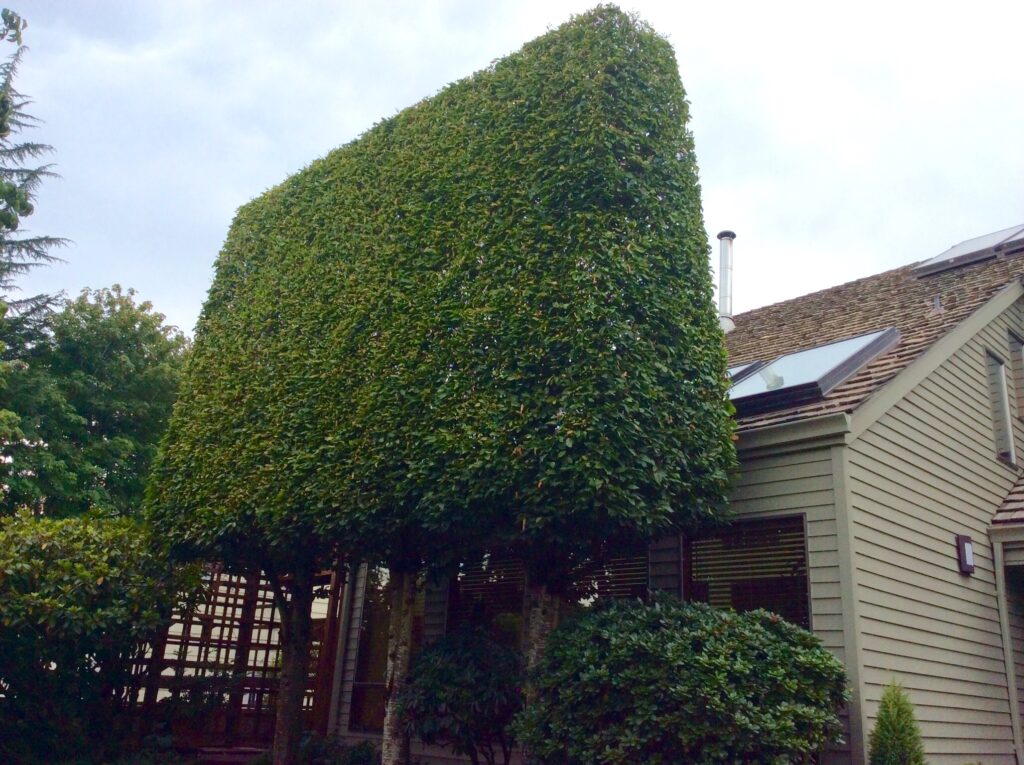
Screening and hedges
Another way hornbeams can be versatile and used in screens is to prune them into patterns and shapes.
Arborist Feilmeier planted several hornbeams in a row and grafted their branches in a criss-cross pattern, pruning the trees to maintain the pattern and size he wanted.
He has also grown a set of three hornbeams together with separate trunks that connect into a thick, well-manicured hedge at the top.
They can grow tall and wide and be shaped into a teardrop with a rounded bottom and a point at the top. “Hornbeams are very easy to form if they want to hedge it or square it off to make a topiary look,” Baker said.
The ‘Fastigiata’, ‘Frans Fontaine’ and ‘Lucas’ at Bountiful Farms all have branches starting at the ground for a complete hedge. The farm also grows European hornbeams called that can be grown in a row and shaped to have full trunks under their hedges.
A European hornbeam can be grown into a 12-foot tree, with a six-foot trunk and a six-by-six-foot-square hedge on top. “Growers do a lot of manipulating and shaping of trees in Europe, and we have a portion we do that with here,” Baker said.
Feilmeier said hornbeams can be molded into many kinds of shapes and can be used purposefully, as long as the landscaper knows what to expect.
“It just depends on how much formalness a landscaper wants and how much they’re willing to spend to get that formalness with the amount of maintenance involved,” Feilmeier said.
He added that they are less expensive to maintain than other types of hedges, including laurel hedges.
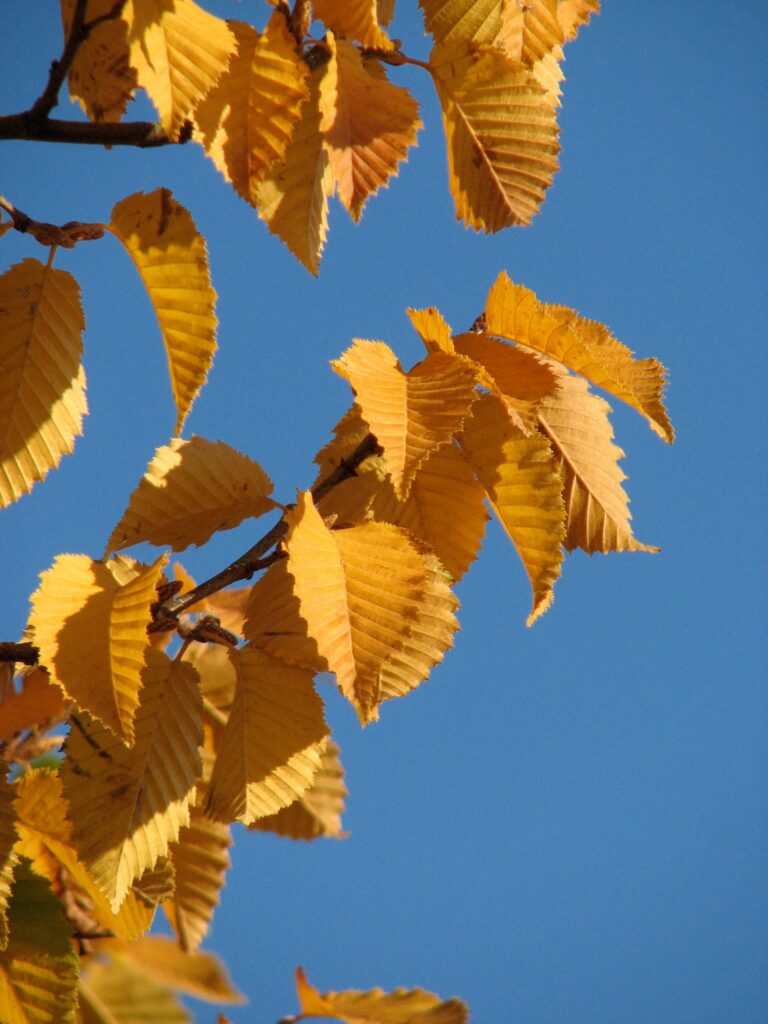
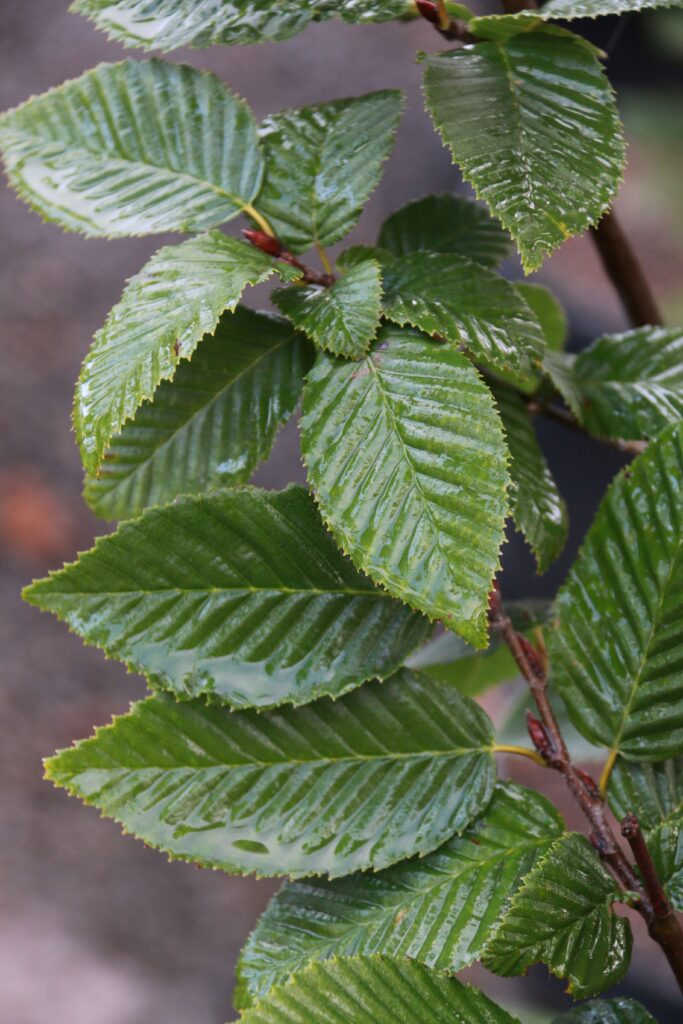
Weather tolerance
Hornbeams also have a wide tolerance for weather and are suitable for many regions.
“All these varieties like full sun, here (in Oregon), and in Utah to the Midwest,” Baker said.
Meacham at J. Frank Schmidt said one advantage to growing the American hornbeam (C. caroliniana) is that it’s cold hardier than the European varieties.
Emerald Avenue® Hornbeam (C. b. ‘JFS-KW1CB’ PP22814) developed by J. Frank Schmidt and Son Co. also has excellent heat tolerance.
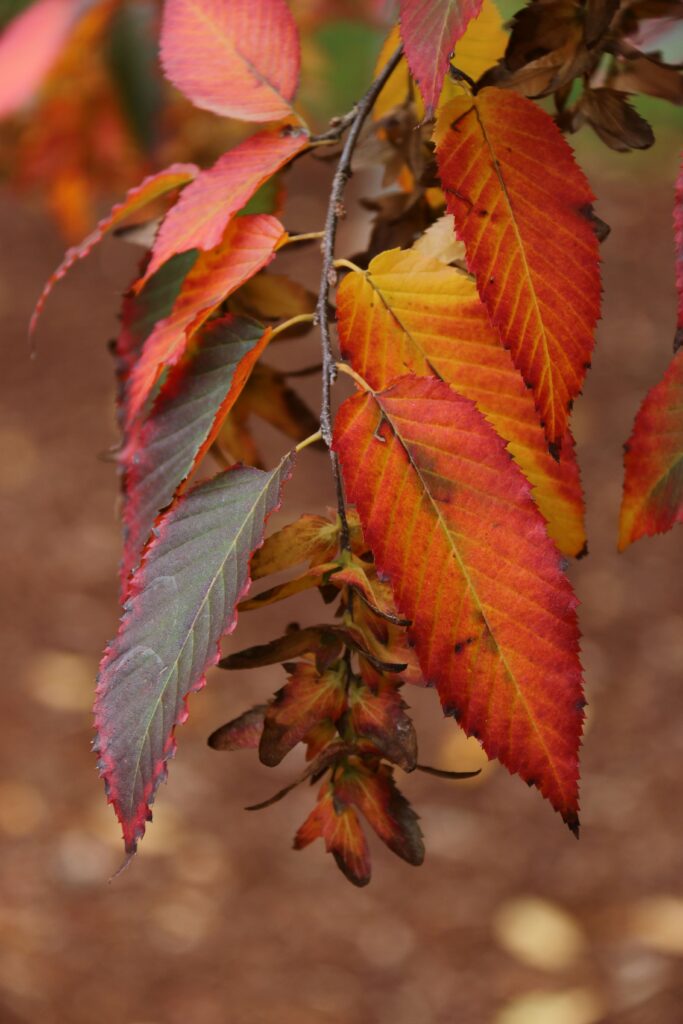
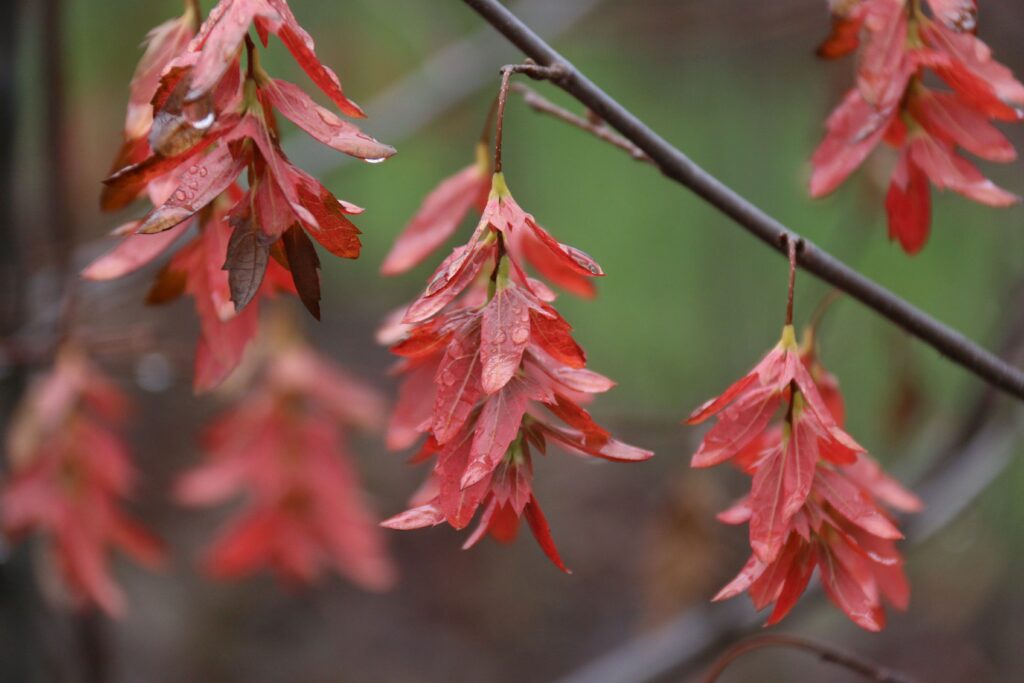
Fall color
Another attractive quality of hornbeams is their fall foliage.
“Typically the vast majority of seedlings are going to have yellow or orange fall colors, but some have red so some people make selections of red leaves and upright forms which are better for planting on landscapes,” Meacham said. J. Frank Schmidt introduced new cultivars of American hornbeams, including the vibrant red Native Flame® (C. c. ‘JFS-KW6’) and the orange Rising Fire® (C. c. ‘Uxbridge’).
The ‘Frans Fontaine’ has a nice green leaf in the summer.
“Like the ‘Fastigiata’, it turns yellow to bronze in the fall. They lose their leaves all at once so it’s easy to clean up in the fall,” Baker said.
She said the ‘Lucas’ holds its leaves in the winter, making it great for hedging.
“The leaves are a bit darker in the summer and in the fall they turn yellow and brown and hold their leaves,” Baker said. “It’s a great selection for a hedging plant for homeowners.”
The need for maintenance
“Where I find them useful is the small postage stamp properties that need a screen wall because the properties are close to each other,” arborist Feilmeier said. “In my previous landscape I created a hedge wall. The hornbeam was the perfect size plant for screening between my property and my neighbor.”
But they’ll need upkeep.
“They’ll either need to maintain them, or not plant them in that space,” Feilmeier said. “There’s a misunderstanding for how to use hornbeams. People expect if they plant a tree they don’t have to maintain it, but because it’s in an urban environment, if they don’t maintain it, it’s going to outgrow their space.”
He said that’s true for many trees, but especially hornbeams.
The ‘Lucas’ is a newer variety that differs from other hornbeams, as it is slower growing and very columnar. It reaches 30 feet high but only 10 feet wide.
“It’s just now starting to gain popularity,” Baker said. “In eight years it’s probably 12 to 15 feet tall and about three to four feet wide.”
Another variety is the very slow growing dwarf European hornbeam, the C. b. ‘Columnaris Nana’, which is used in smaller landscapes. Baker said one 6-year-old plant is only four feet tall and one foot wide. The Nana is also not as columnar as other varieties.
Feilmeier said the ‘Columnaris Nana’ is one variety that landscapers and homeowners can plant and forget about, as long as they know what the use is for. Meacham said the ‘Columnaris Nana’ will likely grow to 10 feet tall after 20 years.
Emily Lindblom is an Oregon-based freelance journalist covering business, environmental and agricultural news. She has a background in community reporting and a master’s degree in multimedia journalism. Visit her website at EmilyLindblom.com or reach her at Emily@EmilyLindblom.com.

